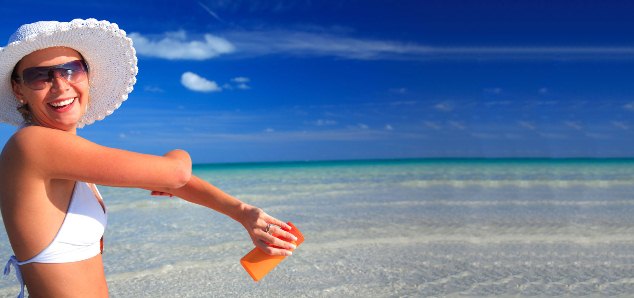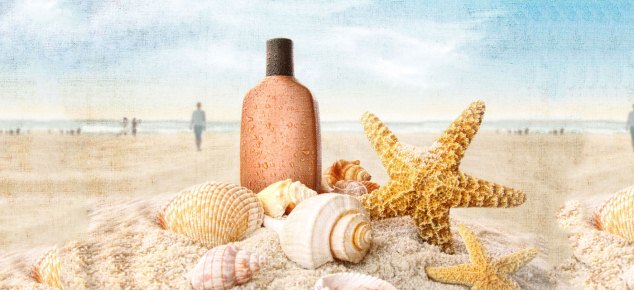0203 397 8891
Open today: 9:00am - 6:00pm
Does one's climate have any indication on the probability of obtaining skin cancer?
Having lived in a hotter climate for a while certainly increases the risk of skin cancer in white populations. However, you might be surprised to hear that we also have worrying skin cancer rates in the UK and that our rate of melanoma, the most serious type of skin cancer is above the EU average. According to the British Association of Dermatologists, the incidence of melanoma is increasing faster than any other common cancer and rates are doubling every 10-20 years, projections suggest they'll continue to rise until 2024. So whether in the city or by the sea, don't relax in the false security of thinking the UK's sun can't do real harm.
What does SPF stand for and how do you ensure an appropriate level of sun protection?
SPF stands for sun protection factor. It is calculated by dividing the amount of sunlight needed to burn your skin in an area protected with sunscreen divided by the amount of sunlight needed to burn your skin in an unprotected area. However, this method effectively only looks at the effects of the burning UVB rays and does not say anything about UVA protection (more about this below).
In many moisturisers you find an SPF of 12-15 only. However, if you really want to reap the benefits of sun protection, you need a much stronger SPF than that. One of the reasons for this is that in 'real life' the way we apply sun protection cream means we rarely reach the level of protection stated on the pack anyway. We simply don't use anywhere near as much as the thick layers they slap on when they test sunscreens in the lab. Scientific studies have shown that the amount of cream a 'normal' person applies only gives a fraction of the SPF printed on the pack.
In order to keep the sun protection level high, we would also need to reapply the product every two hours or so throughout the day. By the time the sun is at its strongest (between noon and 3pm), the protection level of a single morning application will have plummeted. In my professional opinion, in everyday life, you need to apply a broad-spectrum protection with SPF 30-50 so that you'll still have some decent protection in the afternoon when you need it most. And if you are on holiday or in a sunny climate, make sure to reapply the cream throughout the day.

Most people don't know that the SPF itself only tells us about protection against burning UVB rays, and says nothing about UVA protection at all. Ultraviolet sun irradiation reaching the earth's surface is divided into UVA and UVB rays (UVC is usually filtered out by the atmosphere and thankfully does not reach us down here). Very simply put, you could say that UVB makes your skin burn, while UVA makes it age. Filters providing UVA protection are for example titanium dioxide and zinc oxide. To get a good indication about a product's UVA protection, you need to know its PPD (persistent pigment darkening) factor, which doesn't always appear on the pack. A good product for me would provide SPF30-50 and PPD of at least 15. Be wary - PPDs tend to be much lower than SPFs, so don't mix them up.
The UVA star ratings often seen on packaging aren't absolute values - merely an indication of the ratio of UVA to UVB protection. So, if the SPF is low (e.g. under 15) a 5-star rating will give similar low protection. You could have a product with SPF 5, however, and only 4 stars for UVA, which in fact protects skin better from UVA than a lower SPF product with 5 UVA stars. In my opinion the star rating is very misleading. Alternatively you might have noticed the newer UVA logo on the pack, which guarantees a standardized ratio of 1:3 UVA protection to UVB. Again, this new logo does not really tell us an exact PPD, but is marginally better than the star rating.
Why is it important to wear sun protectant at all times of the year, whether it's sunny or cloudy?
Levels of UVA, which you now know to be the main ageing sunrays (not to mention playing a role also in skin cancer generation) vary far less with the seasons compared to burning UVB rays. While in winter you might not get sunburned, your skin can still be exposed to significant amounts of UVA without even noticing. By the way, UVA can also penetrate window glass and clouds, so has an impact even on cloudy days. So I always recommend to my patient to use the same sun protection level of broad-spectrum SPF 50 in summer and winter. But if you really feel you need to reduce your SPF in winter, don't go below broad-spectrum SPF 20 to 30.
Will fake tanning products harm my skin?
Self tanners have traditionally been seen as an easy way of getting a sun-kissed look without risking UV-damage. And although I agree that they're much less harmful for your skin than baking on a beach or - heaven forbid a sunbed, I do have some reservations. Self-tanning formulas usually rely on DHA (dihydroxyacetone) a sugar-derived molecule that stains the horny layer of your skin brown during a chemical process called the Maillard reaction. Self-tanners don't induce real pigment formation, but only stain the skin's surface layer. Sounds harmless enough. Yet the Maillard reaction still generates free radicals, which can cause oxidative stress. And although levels of free radicals generated by fake tans may not be that high, I personally try to avoid any product known to generate free radical activity in my skin. If you feel you need a glow, using a good mineral make-up or bronzer is a good alternative.
It's also important to remember that the colour you get from a self-tanner provides essentially no sun protection (not worth mentioning anyway). So my advice is, love and accept your skin's natural colour for its own unique beauty.

There has recently been a great deal of discussion about how sun protection creams affect your body's synthesis of vitamin D. It's true that skin needs sunlight (namely UVB) to produce vitamin D by itself and a sufficient level of vitamin D in your blood is crucial to overall health. The latest guidelines set the ideal blood level at 75-200 nanomoles per litre. A simple blood test will determine your levels. Vitamin D is important for maintaining strong and healthy bones, a deficiency has also been shown to increase the risk of multiple sclerosis (MS), rheumatoid arthritis, certain cancers including breast cancer, high blood pressure, heart disease, diabetes and other chronic diseases to name a few.
As a dermatologist, I would much rather recommend taking vitamin D supplements to adjust your level if you're deficient. UV light not only ages your skin, but can also cause skin cancer. The amount of vitamin D your skin produces depends on a variety of factors including its colour - pale skins synthesize more vitamin D faster than dark skins, but they also burn more easily. There is unfortunately no established level of sun exposure, which will guarantee to produce enough vitamin D without harming your skin.
Are tanning beds safe or should they be avoided?
Tanning beds damage your skin and increase your risk of skin cancer. We often hear from tanning bed companies that they have filtered out the skin burning UVB rays, implying they're now 'safe'. But that still leaves you UVA, which in fact penetrates even deeper into the skin, not only making you look prematurely old but also raising your risk of skin cancer.
The other problem is that many of these companies tend to define UVB differently from how we define it as doctors. In medicine, sun rays with a wavelength ranging from 280-320nm are called UVB and 320-400nm are classed as UVA. Yet some companies conveniently shift the parameters and call everything between 315-400nm UVA. So if they use 'only UVA' according to their definition, there's a chance that there's some UVB in the 'grey area' between 315 - 320nm.
Also, we know that UVA on its own doesn't give you such a good colour - more a greyish-brown compared to the bronzed UVB tone, which develops within 24 hours of exposure. So if you do get a great colour, chances are there was UVB in the mix! In my opinion, it's certainly best to avoid sunbeds altogether!

No. Most commercial sun protection creams only major on UVB and if you are lucky also UVA. However, newest research shows that it is not only ultraviolet irradiation (i.e. UVA and UVB), which damages our skin. The longer wavelengths in the sun's electromagnetic irradiation that's infrared and even visible light can harm skin too. The bad news is that even the best sun protection creams on the chemists' shelves can't shield skin from these types of rays. That's why you should wear a high-grade antioxidant product underneath your sun protection cream to help reduce the oxidative stress cause by free radical damage.
Reports indicate skin cancer is on the rise in the UK, especially Melanoma, why do you think this is the case?
Yes, that is true. Some of the rise may be due to better surveillance and earlier detection these days, but most is considered to be a real increase and linked to changes in sun behaviour. One of the reasons is likely to be 'binge tanning', either on holiday or by sunbeds. Unfortunately a 'healthy' tan is still seen as beautiful and desirable for most people and travel to hot spots is cheaper and more accessible now. Most people now know in theory about the dangers of excessive sun exposure, many still choose a short-term tan over long-term skin health, as it is hard to break that ingrained thinking.
And while there might have recently been a modest change in behaviour in protecting children from the sun, we now tend to see the skin cancers in a generation where sun protection was not taken as seriously. Unfortunately our skin does not 'forget' past sun exposure. It 'remembers' every single hour of excessive exposure back to your childhood and once it has clocked up a certain amount of intracellular damage, you might develop a skin cancer, sometimes with a delay of a few decades.
It is estimated that approximately 86% of melanomas in the UK are linked to UV exposure from the sun or sunbeds and that 90% of non-melanoma skin cancers are caused by sun exposure.
Join our mailing list to receive the latest news, offers & £50 off your first holiday.